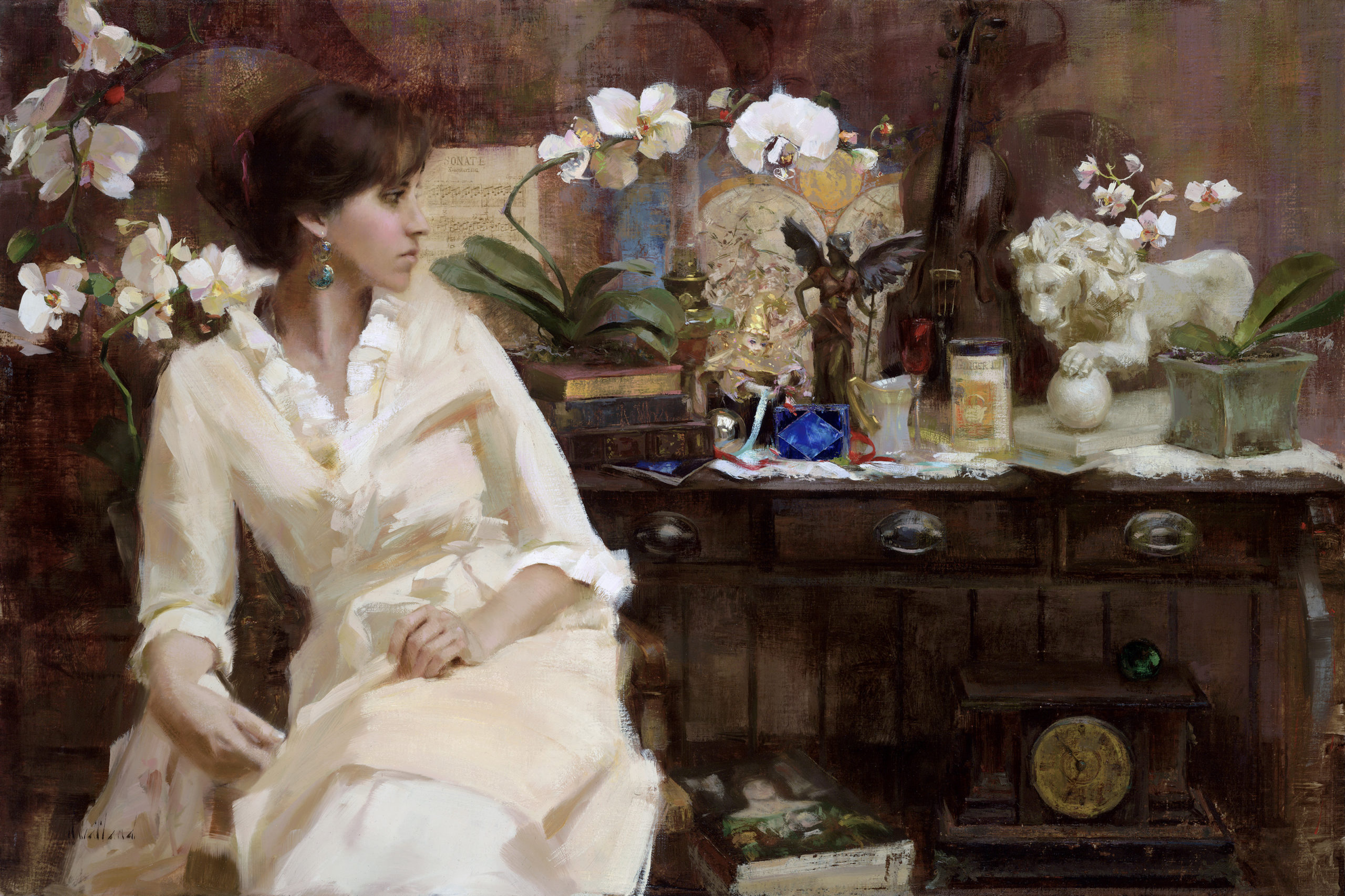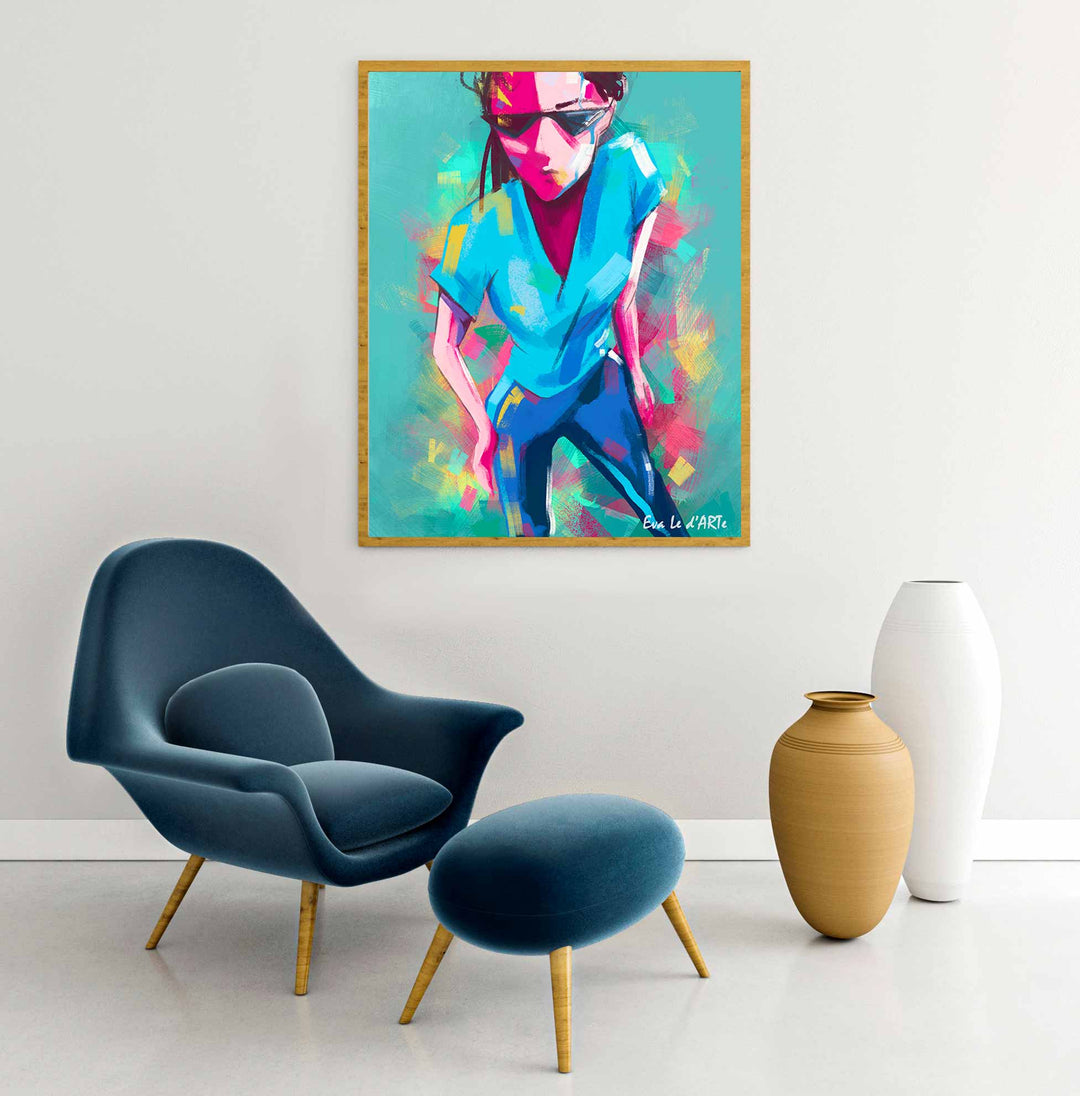How Figurative Oil Painting Changes Typical Artistic Expression
How Figurative Oil Painting Changes Typical Artistic Expression
Blog Article
The Advancement of Metaphorical Oil Painting: Recognizing Its Historic Relevance and Modern Interpretations
The advancement of figurative oil paint serves as an engaging lens via which to analyze the interplay in between artistic expression and historic context. Contemporary musicians, attracting from this rich heritage, are currently reinterpreting the human number in methods that test traditional stories.
Origins of Metaphorical Oil Paint
The origins of metaphorical oil paint can be traced back to the early Renaissance in Europe, specifically in the 15th century. This period marked a substantial separation from the level representations and stiff kinds characteristic of medieval art. Artists started to explore naturalism, highlighting the human number and its psychological expression. The development of oil paint permitted better deepness of color and detail, improving the realistic look and vibrancy of their work.

In this transformative age, figures were frequently depicted within contextually abundant settings, showcasing not just their physical attributes but additionally their emotional states. Leaders such as Jan van Eyck and Titian used the tool's flexibility, employing layering techniques to attain luminance and appearance. This advancement assisted in the portrayal of intricate textiles and the subtleties of complexion, adding to the growth of portraiture and narrative scenes.
Moreover, the Renaissance emphasis on humanism cultivated an admiration for distinctiveness, which in turn affected artists to develop more relatable and dynamic numbers - figurative oil painting. Because of this, metaphorical oil painting arised as a powerful lorry for storytelling and psychological interaction, preparing for future creative activities and styles
Trick Historical Motions
Substantial historical activities have formed the evolution of figurative oil paint, each contributing one-of-a-kind ideologies and techniques that broadened the medium's possibilities. The Renaissance noted a turning point, stressing realism and the human type, with musicians like Leonardo da Vinci and Michelangelo pushing the limits of physiological accuracy and point of view. Following this, the Baroque period brought dramatic contrasts of light and shadow, exhibited by Caravaggio, that infused religious motifs with intense emotionality.
The 19th century introduced Romanticism and Realistic look, where musicians such as Delacroix and Courbet challenged classical suitables, concentrating on specific expression and everyday life. The development of Impressionism better revolutionized the medium by highlighting the results of light and shade, resulting in a departure from standard depiction.
In the very early 20th century, activities like Expressionism and Cubism redefined figurative painting via abstraction and the expedition of psychological depth. Each of these movements not only reflected the societal modifications of their times however likewise laid the foundation for modern analyses. The interaction in between these historic activities has actually created an abundant tapestry of philosophies and styles, affecting modern artists in their pursuit of capturing the human experience on canvas.
Techniques and Products Advancement

Throughout the Baroque period, strategies such as chiaroscuro and sfumato emerged, enhancing the psychological resonance of figurative make-ups. Artists started to try out lusters and impasto, controling appearance and brightness. By the 19th century, innovations like the usage of pre-mixed paints in tubes revolutionized access, allowing musicians to repaint en plein air and catch the short lived impacts of light.
The 20th century witnessed the introduction of artificial pigments and mediums, which broadened the scheme and altered the uniformity of oil paints. The exploration of brand-new application strategies, such as palette knives and brushes of differing rigidity, further diversified imaginative expression. Jointly, these innovations mirror the developing partnership in between materials, methods, and the creative vision integral in figurative oil paint.

Contemporary Analyses
Contemporary analyses of metaphorical oil paint show a vibrant discussion between custom and advancement, where artists challenge established norms and explore diverse motifs. This advancement shows up in numerous means, as modern artists blend classical techniques with modern ideas, typically attending to social, political, and individual stories.
Lots of professionals draw inspiration from historical jobs, yet they instill their pieces with contemporary viewpoints, utilizing the human form as a vehicle for discourse on identification, society, and gender. Artists significantly trying out abstraction, distortion, and multimedias, which permits a broader analysis of the figure and its context.
Moreover, the usage of brilliant shade combinations and non-traditional compositions usually serves to disrupt standard seeing experiences, prompting vital engagement from target markets. This shift in emphasis extends past aesthetics; it mirrors a growing recognition of the complexities of human experience in an interconnected globe.
As figurative oil painting proceeds to develop, it continues to be a crucial tool for checking out the subtleties of contemporary life, embodying both a respect for heritage and a dedication to dynamic idea. The result is a rich tapestry of expression that resonates with the complexities of the modern human condition.
Effect On Modern Art
The influence of metaphorical oil painting on contemporary art is extensive, as it has actually continually inspired a myriad of creative motions and techniques throughout the 21st and 20th centuries. From Expressionism to Surrealism and past, the visit homepage exploration of the human figure has stayed a main style, permitting musicians to share intricate emotions and narratives. This emphasis on figurative representation has resulted in a re-examination of standard methods, leading to cutting-edge strategies that mix realistic look with abstraction.
In addition, contemporary musicians have embraced figurative oil painting as a way to address political and social issues, using the medium to challenge understandings of identification, culture, and sex. The resurgence of passion in metaphorical operate in recent years mirrors a yearning for connection in an increasingly digital world, where human experience and emotion are extremely important.
In addition, the dialogue between figurative oil painting and contemporary art is noticeable in the works of artists such as Kehinde Wiley and Jenny Saville, who these details make use of historical referrals while instilling their pieces with contemporary importance. Ultimately, figurative oil painting continues to shape and redefine modern-day imaginative expression, emphasizing its long-lasting value in the art globe.
Verdict
The evolution of figurative oil paint highlights its historical value and adaptability across various artistic activities. Eventually, figurative oil painting remains an essential medium for exploring the human experience, reverberating exceptionally in today's digital landscape.
The evolution of figurative oil paint serves as an engaging lens with which to examine the interaction in between artistic expression and historic context.Considerable historical activities have actually formed the evolution of figurative oil paint, each contributing one-of-a-kind approaches and techniques that increased the medium's opportunities.As historic motions formed the trajectory of figurative oil paint, the techniques and products used by musicians have likewise undergone significant find out improvements. figurative oil painting.The impact of figurative oil paint on modern-day art is profound, as it has continuously motivated a myriad of creative motions and methods throughout the 21st and 20th centuries.The evolution of metaphorical oil paint emphasizes its historic value and flexibility throughout different imaginative activities
Report this page